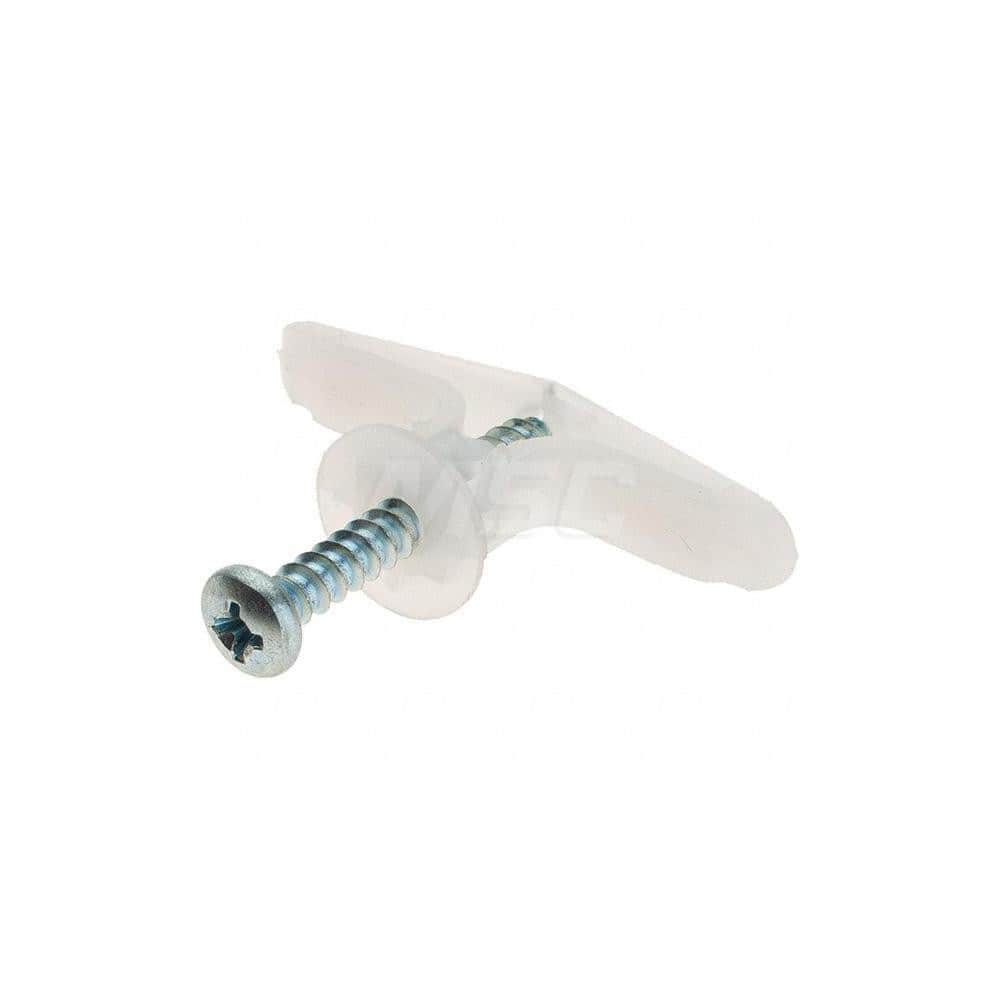

- #PLASTER WALL ANCHORS INSTALL#
- #PLASTER WALL ANCHORS PATCH#
- #PLASTER WALL ANCHORS PLUS#
- #PLASTER WALL ANCHORS TV#
You really have to read the specs on the back to realize it is ultimate tensile pull-out value with a disclaimer that "Industry standards recommend 1/4 of ultimate test load."įliptoggle (0.25" version) list 135lbs in 0.5" drywall. It (0.25" version) state on the front packaging in large font holds up to 265lbs in 0.5" drywall. I did find Snaptoggle packaging claims a bit misleading. Snaptoggle's two rails design which requires both rails being aligned with each other in order to get the plastic locking ring moving.
#PLASTER WALL ANCHORS INSTALL#
Cobra Fliptoggle was a tad bit easier to install in that it is easier to slide the plastic locking ring down the rail toward the wall primarily because it has only one rail vs.
#PLASTER WALL ANCHORS TV#
I used both Cobra Fliptoggle (Home Depot) along with Snaptoggle (Lowes) this past week to put up a TV in drywall.īoth require 0.5" hole but worked quite well. Unfortunately I have to ding Snaptoggle for their marketing. I see that happen all the time when people try to anchor curtain rods using drywall anchors in plaster and then throw a heavy curtain on or have someone accidentally grab onto the curtain and pull. If it were heavy, I would definitely go the toggle bolt route and not risk pulling off a big chunk of plaster. You didn't say the weight and I'm assuming it is fairly light.
#PLASTER WALL ANCHORS PATCH#
Fortunately as long as it is still attached to the lathe behind, it is fairly easy to patch up and touch up with paint assuming you still have some leftover. Older plaster can sometimes fracture off big flakes or chunks if you aren't gentle. I find newer plaster easily accepts your typical push in(not screw in) expanding anchors for accepting a screw. What you need really depends on the condition of the plaster and that comes from experience. Question : Given her situation would toggle anchors be a better choice to hold the plastic base of the charging station firmly against the wall ? Solution: use a stud finder first, have a suitable diameter and length screw available which you would use if you were mounting directly into a stud and drill first with the smaller size drill you would use for that screw once you know you're not in a stud then use the appropriate size drill for the snaptoggle. Problem: what if it turns out you're in a stud and this anchor won't work, but now you've already drilled a giant hole. Orient the device so that when deployed, the metal piece which will be behind the lath will be vertical. Warning: this calls for quite a large hole, but the holding strength is great. It has been a while since I bought any, but I think there are different sizes and materials to choose from. But here is a video showing how it works differently whether it ends up in solid material, like a stud, or if there is a hollow area it can expand into.įor large weights, the best is the SNAPTOGGLE. It seems like the identical product to Fischer DuoPower I'm guessing Hillman bought it from Fischer.

Sure, for small weights and small screws, like mounting a smoke detector, you can probably just get away with the regular technique using the same anchors you'd use if it were drywall - except, I'd use a masonry bit until you get through the plaster.įor medium weights, what I've used to hang various size pictures on lath and plaster walls is Hillman DuoPower. Some expanding anchors are expecting a specific thickness of drywall past which point they will then expand: these types won't expand as expected in lath and plaster. And if your drill hits right between 2 laths, it's however thick the plaster is there.
#PLASTER WALL ANCHORS PLUS#
But if you drill in the upper part of a lath, it's plaster plus lath plus another layer of plaster "fingers". If your drill hits the lower part of a lath, the thickness is plaster plus lath. When the first layer of wet plaster is troweled onto the lath, a variable amount of plaster squeezes through the spaces between the strips of lath wood, curl downward with gravity and eventually harden into "fingers" gripping the lath below. It may vary from place to place around the house or even in different areas of the same wall. The second difference is thickness you're not really sure how thick the plaster plus lath is going to be. When you hit wood, you won't know you've hit a stud until you've drilled farther than the thickness of a stud. Oh, and put a bit of blue tape first so your masonry bit is less likely to "walk". The first difference is: use a masonry bit when drilling lath and plaster, then when you strike wood (whether it's a lath or a stud), switch to a regular twist drill bit suitable for wood. The large threaded plastic anchors that work so well in drywall won't work in lath and plaster. The plaster in lath and plaster is more like limestone. Using anchors in lath and plaster is very different from anchors in drywall.ĭrywall is a much softer plaster containing more gypsum or calcium sulfate with a layer of paper on each side.


 0 kommentar(er)
0 kommentar(er)
